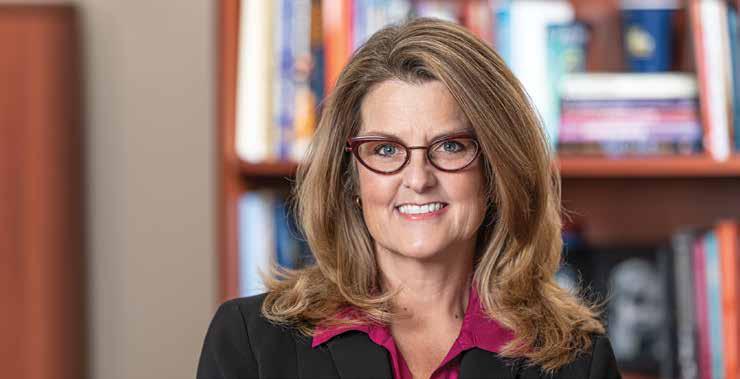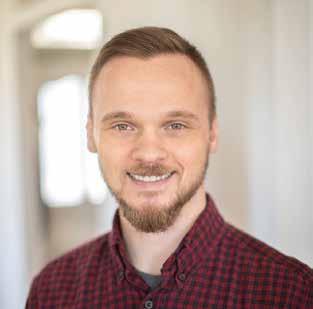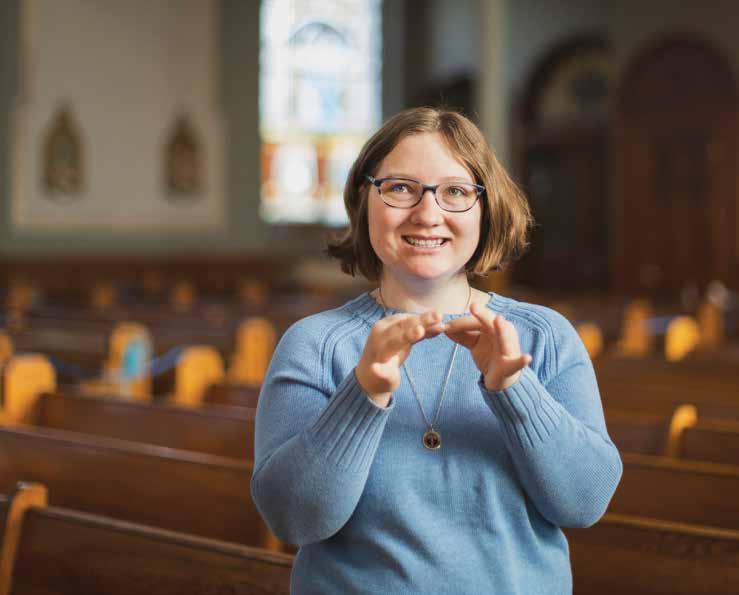
6 minute read
A FAMILY OF VOCATIONS
The vocations prayer for the Archdiocese of Cincinnati asks God to make our homes and hearts responsive to His call. In the late 19th and early 20th Centuries, one family was an astonishing example of how we can respond to Him. Patrick Hickey and Johanna Stanton, both immigrants from Ireland, married on April 17, 1856 at St. Peter in Chains Cathedral. Between 1857 and 1870, the couple had five boys and two girls. All seven of their children entered religious life. The boys were ordained priests between 1880 and 1892, and the daughters both entered religious life with the Sisters of Notre Dame de Namur. Having so many religious vocations brought fame and a place of honor to the Hickey family.
Patrick Hickey (1820-1892)
Advertisement
Patrick was well known to be honest in his business dealings with railroad companies, active in Catholic charitable works and a quiet, prayerful man who prayed the Rosary while traveling on the train to and from work.
Msgr. Charles Hickey (1863-1953)
The last living of the Hickey siblings, Msgr. Charles served parishes in the northern parts of the archdiocese, from Urbana to Lebanon and, finally, in Dayton. After retirement he was a chaplain for the Sisters of Notre Dame de Namur.
Johanna Hickey (1833-1905)
Johanna was praised as a humble woman who provided a hospitable home and always made sure her children were in good company, enjoying the outdoors and had plenty to read.
Msgr. William Hickey (1857-1924)
When he completed his seminary studies, he was too young to be ordained, and had to wait a year. He spent the majority of his priestly life in Dayton.
Father Edward Hickey (1859-1921)
A popular pastor in Middletown at the time of his death, Father Edward took an interest in the moral development of boys and young men and built a gymnasium and swimming pool to keep young people in wholesome surroundings.
Msgr. John Hickey (1861-1938)
Serving in parishes from Chillicothe down to Norwood, he was known as “the orator” for the archdiocese and gained recognition for his patriotic speeches during the First World War.
Father George Hickey (1868-1941)
He was the only son their father did not get to see ordained a priest, having died three weeks prior to his last son’s ordination. His final pastorate was in Urbana, and after retirement, Father George served as chaplain at Mt. Notre Dame in Reading.
Sister Mary Annunciata (Mary Hickey, 1865-1943)
Mary received her education at Mt. Notre Dame Academy, where the Sisters of Notre Dame de Namur instructed her. The first of the two daughters to enter religious life, Sister Annunciata taught music for most of her ministry.
Following the death of their father, Martha delayed entering religious life so she could be a companion to their mother. She entered religious life in 1912, and Father George later said, “Of all the members of the Hickey family, she was the most beloved.”
Deaf Ministry
Newly-formed Archdiocesan Office for Persons with Disabilities Seeks to Make the Sacraments More Accessible
BY JOHN STEGEMAN
Imagine being a Catholic in need of confession but being told no priests in the area speak your language. Consider the same scenario for weddings and baptisms. Would you feel welcome as a parishioner if your entire sacramental life were administered through interpreters?
Such is the life of deaf Catholics in the Archdiocese of Cincinnati.
Noelle Collis-DeVito, associate director for the archdiocese’s Office for Persons with Disabilities, wants to change that. Collis-DeVito, and office director Bob Wurzelbacher, have operated the newly-formed office since May. Kara Ross of the Respect Life Office also assists. Their spectrum of focus is wide, and some early efforts are focused on the Deaf Community.
“Our goal is to meet the needs of people from across the spectrum of disability: mental health, the deaf community, the blind community, people with developmental and intellectual disabilities, people with Autism and people with physical disabilities,” Collis-DeVito said.
One reason for the focus on the deaf community is a dearth of priests available to celebrate the sacraments in American Sign Language (ASL). The archdiocese, which consists of more than 200 parishes, had just two priests capable of doing so in recent years. One is now deceased, and the other has retired and moved away. The office is working to see local seminarians trained in ASL and, in the meantime, will bring in deaf priests from around the country quarterly.
“There are now no priests in the archdiocese who can provide the sacrament of reconciliation for the deaf community,” Collis-DeVito said. “We’re working with a team of people to try and correct that and do what we can to provide opportunities for that sacrament and for all of the sacraments in their native language, because you don’t want to get married with an interpreter, or have your baby baptized with an interpreter. It’s been a great opportunity to envision what a church that’s welcoming to the deaf community would look like.”
Collis-DeVito said the Office for Persons with Disabilities doesn’t have statistics on how many deaf Catholics reside in the archdiocese. St. Rita School for the Deaf reports that approximately three in every 1,000 babies nationwide are born with permanent hearing loss. The deaf
community extends beyond those with total hearing loss. It also includes the hard-of-hearing, people who have an impairment, people with cochlear implants and children of deaf adults.
Collis-DeVito said that only three percent of the deaf community go to church at all, and only one percent of those are Catholic.
“The interesting thing about the deaf community is it’s really its own culture,” she said. “They have their own language and cultural norms and media. There’s just a general feel for what it’s like to be deaf. They take pride in that, and they don’t really see being deaf as a disability; it’s just that they can’t hear.”
St. Rita School for the Deaf has long been a staple of deaf outreach in the archdiocese and is funded by the Catholic Ministries Appeal each year. Several members of the St. Rita staff are on the Office for Persons with Disabilities task force.
Other efforts on the horizon for the new office is resuming sensory-friendly liturgies for persons with autism, other disabilities and even Alzheimer’s disease, fighting the stigma associated with mental health issues and building a catechetical, individualized education program for children with various disabilities.
“People want to be known for who they are and not for their disability,” Collis-DeVito said. “Their disability is just a part of who they are.”

Learn more about the Office for Persons with Disabilities by following them on Facebook at facebook.com/cincinnatiOPD.

Congratulations Hannah Houser!
We are proud of your accomplishments and the impact your life will make on others as you follow your calling.
VISION
St. Rita School for the Deaf will maximize our students’ full potential by developing the whole child to be confident, contributing members of society so that they may carry the message of Christ’s love to all they encounter.
TO DONATE: www.srsdeaf.org/Giving.aspx or CALL 513-771-7600








